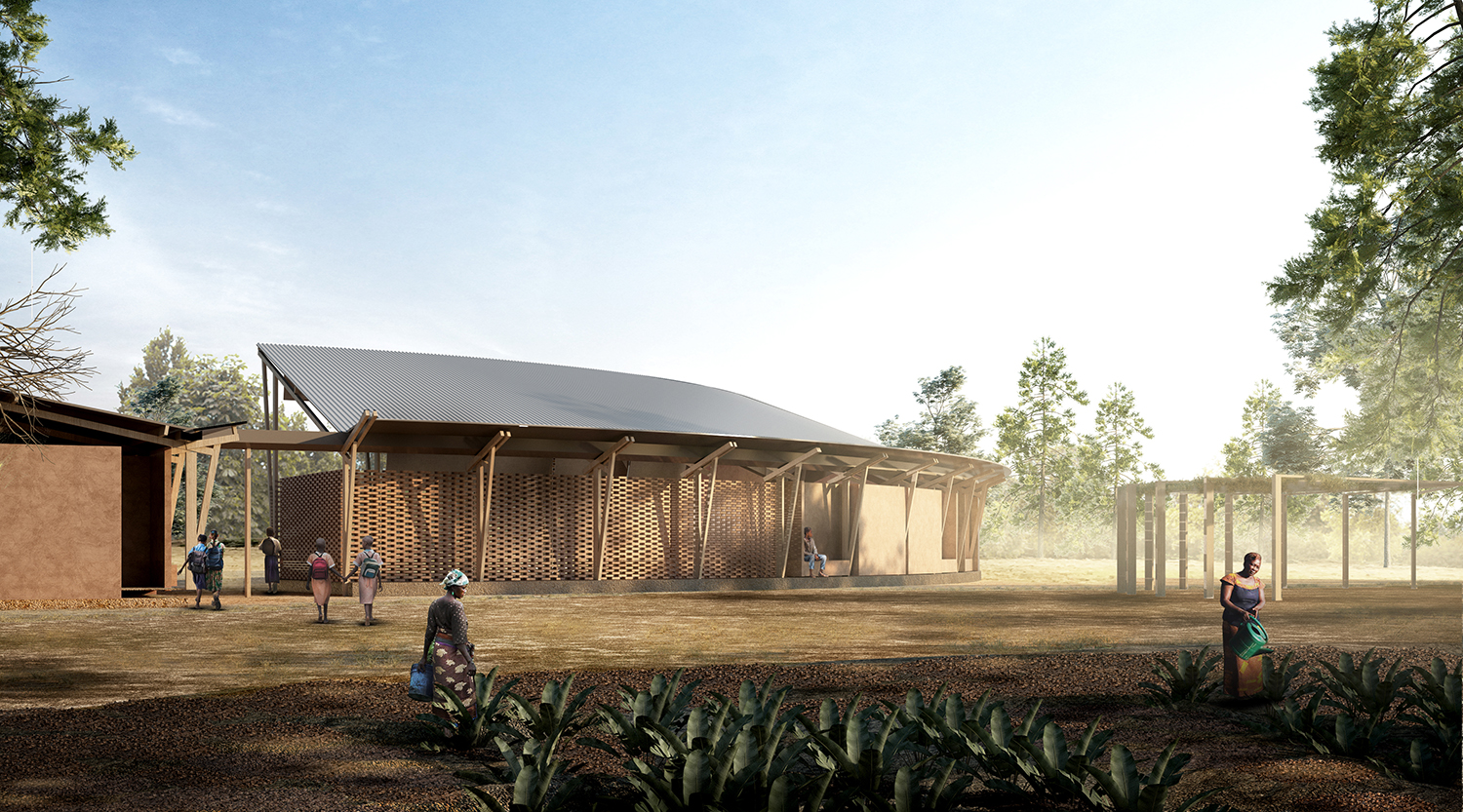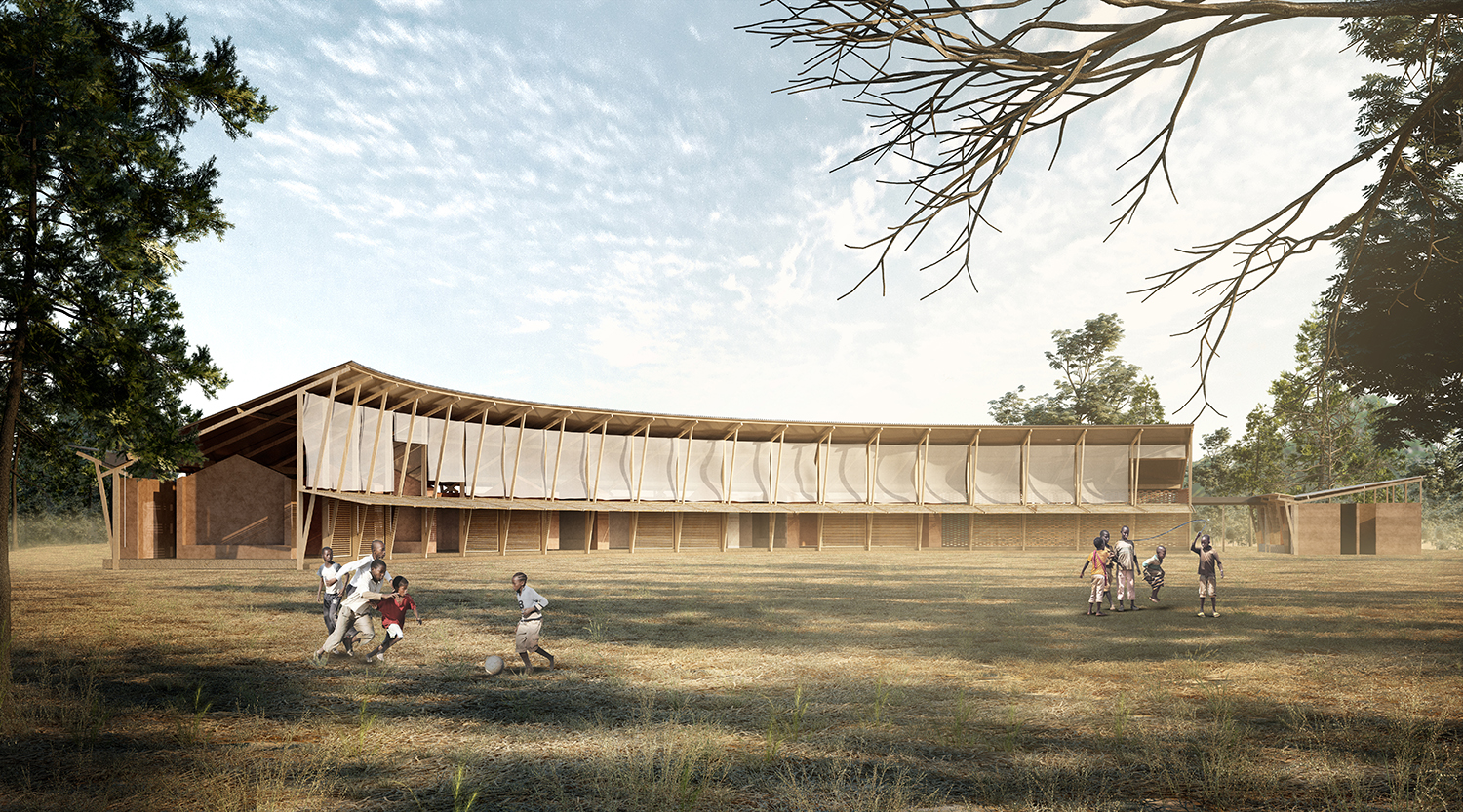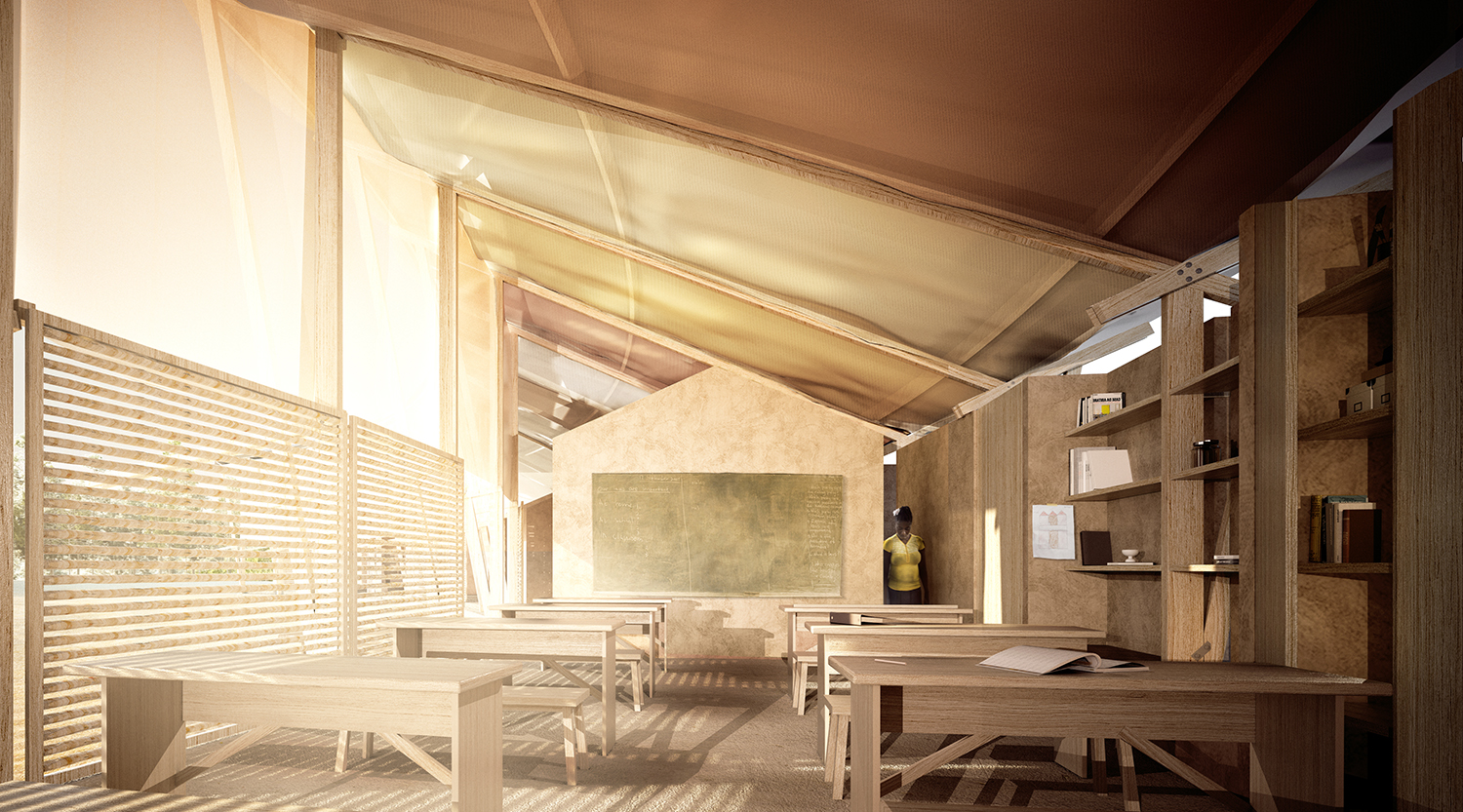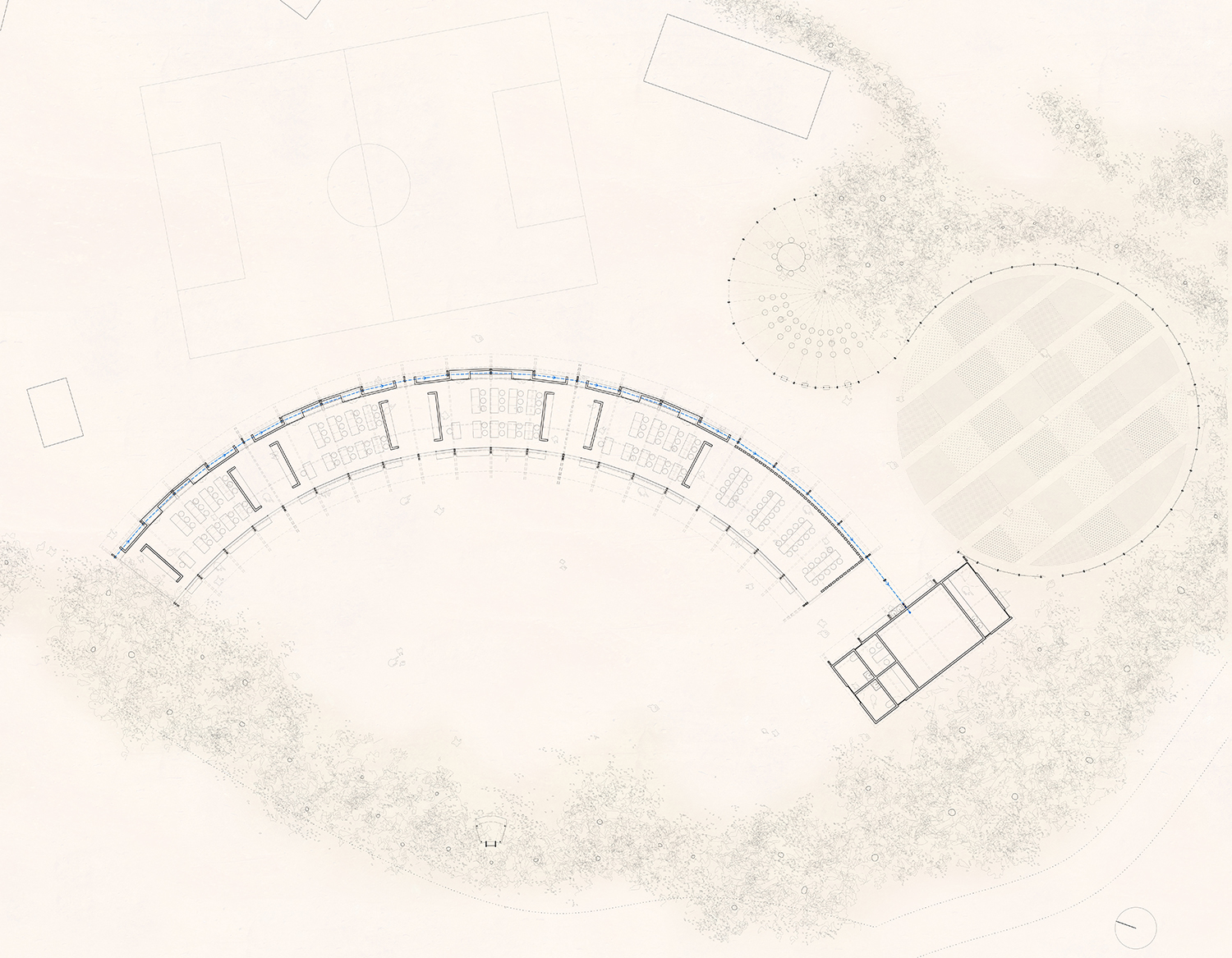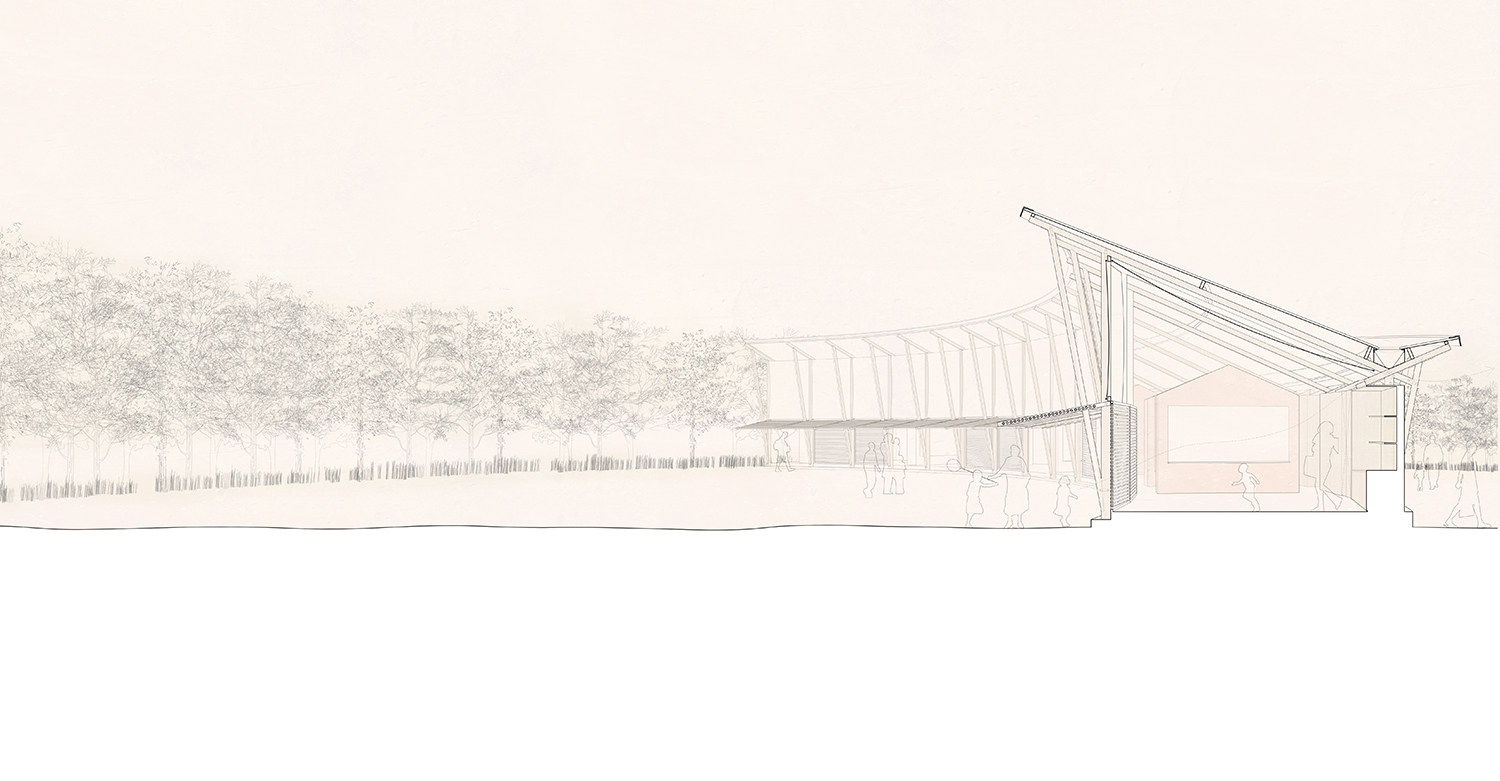☉ Haiti Rural School is a thrid prize competition entry by Bruschy Cunha Reis for Arch Sharing in 2019. It is located in Cabaret Haiti in a undeveloped setting. Its scale is small with a surface of 300 sqm. Key materials are ceramic and wood.
A gesture conforms a playground.
Around it, one horizontal continuous structure houses four classrooms and a multi-purpose room, all facing the courtyard in a classic amphitheater figure.
This shape forms the school’s core, where the building’s placement is carefully selected in order to transform an immense site location into one more appropriate towards the scale of the building and its students, creating a better atmosphere between the human-constructed and the pre-existing nature-assembled environment that confines the site.
At the lower South-East side of the school, a second volume emerges, confining a more formal entrance that draws the visitor past the North-East facade, a pergola and vegetable garden before encountering this secondary structure, where the teacher’s room, kitchen, storage room and bathrooms are located.
Between these more utilitarian spaces, and taking advantage of being located at the site’s lowest point, a large water cistern is fed by the water collected in the sloping roofs. From the cistern the water can be used in the kitchen, bathrooms or even in the vegetable garden, which not only helps the school be more self-sufficient, but also provides unmeasurable pedagogical value.
The building draws inspiration from local vernacular architecture techniques and materials, aiming to design in a contemporary language without losing connection to its roots. Therefore, most of the materials should be locally obtained, such as the wood for the structure and furniture, earthbased bricks and mortar and cloth sourced from the re-emerging Haitian cotton industry.
Employing such distinct materials, enables the project to showcase a richness in textures and ambiances. This is apparent in the contrast between the East and West facades, with the first presenting itself as a low, opaque and heavy wall, built in a wooden Saint Andrew’s cross structure, filled with adobe and covered in an earth-based mortar, a variation of the Tiwoch technique.
On the West side however, that opens itself up to the playground, we can find a lighter and more breathable construction system, that draws inspiration from the typical Clissage, allowing the interior space to be filled by a filtered light while slightly shielding the students from excessive exterior distractions. Above them, and connecting both facades, curtains extend from the playground to the East façade, hiding the roof structure behind cloth dyed in playful colours.
All of these lighter elements should be easily removed and stored, making sure they can be readily repaired or shielded from severe weather.
